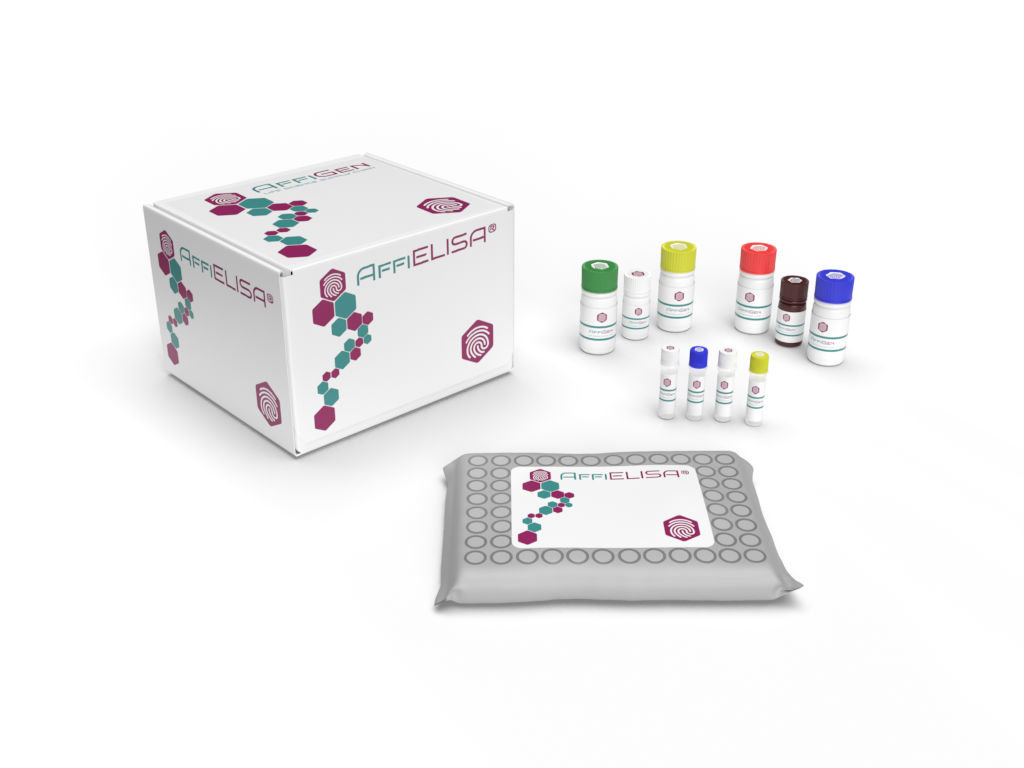Neomycin ELISA Kit
Introduction
Neomycin is an aminoglycoside antibiotic widely used in clinical and veterinary applications due to its potent bactericidal activity against Gram-negative and some Gram-positive bacteria. Monitoring neomycin levels in biological matrices (e.g., serum, plasma, urine, food samples) is essential for therapeutic drug monitoring, toxicological studies, and ensuring compliance with regulatory limits in food safety.
Enzyme-Linked Immunosorbent Assay (ELISA) provides a highly sensitive, specific, and reproducible immunoassay platform for quantifying neomycin concentrations in complex matrices. This overview details the technical components, principles, and analytical performance characteristics of Neomycin ELISA kits.
Principle of the Neomycin ELISA Kit
The Neomycin ELISA Kit utilizes a competitive immunoassay format based on specific antigen–antibody interactions. The key features include:
- Antigen: Neomycin or a neomycin-protein conjugate immobilized on the microtiter plate wells.
- Antibody: High-affinity polyclonal or monoclonal anti-neomycin antibodies, typically raised in rabbits or mice.
- Detection: An enzyme-labeled secondary antibody (commonly horseradish peroxidase, HRP) that binds to the primary antibody.
- Substrate: A chromogenic substrate (e.g., TMB—3,3',5,5'-Tetramethylbenzidine) that yields a measurable colorimetric signal upon enzymatic conversion.
In the competitive assay, free neomycin in the sample competes with immobilized neomycin for binding to a limited amount of anti-neomycin antibody. The resulting signal inversely correlates with the neomycin concentration in the sample.
Technical Specifications
Sensitivity and Detection Range
- Limit of Detection (LOD): Typically ranges from 0.1 to 1 ng/mL depending on antibody affinity and assay optimization.
- Dynamic Range: Linear detection often spans 0.5 to 100 ng/mL, allowing quantification of trace to moderate concentrations in biological or food samples.
Assay Format and Components
- Plate Type: 96-well polystyrene microplates with high protein-binding capacity.
- Sample Volume: Usually 50–100 µL per well.
- Incubation Conditions: Optimized for temperature (typically 25–37°C) and time (30–90 minutes) to balance assay throughput and sensitivity.
- Washing: Multiple wash steps with buffered saline containing detergents (e.g., Tween-20) reduce non-specific binding and background noise.
Specificity and Cross-Reactivity
- The antibodies demonstrate high specificity to neomycin, with minimal cross-reactivity (<1%) toward structurally related aminoglycosides such as kanamycin, gentamicin, and streptomycin.
- Cross-reactivity profiles are validated with structurally similar compounds to ensure assay selectivity.
Sample Preparation
- Biological samples typically require dilution and possibly extraction to remove interfering substances.
- Food matrices (e.g., milk, meat) may need homogenization and solvent extraction followed by filtration or centrifugation.
- Matrix-matched calibration curves or standard addition methods improve accuracy by compensating matrix effects.
Analytical Performance
Precision and Reproducibility
- Intra-assay variation: Coefficient of variation (CV) < 10%
- Inter-assay variation: CV < 15%
Accuracy and Recovery
- Recovery rates from spiked samples generally range between 85% and 115%, confirming reliable quantification.
Stability
- Kit reagents are stable under recommended storage conditions (2–8°C) for 6–12 months.
- Prepared samples should be analyzed promptly or stored at -20°C to prevent neomycin degradation.
Applications
- Clinical Therapeutic Drug Monitoring: Assess neomycin plasma levels to prevent nephrotoxicity and ototoxicity.
- Veterinary Medicine: Monitor residue levels in livestock to comply with withdrawal periods.
- Food Safety: Detect neomycin contamination in dairy, meat, and seafood products according to regulatory limits established by agencies such as FDA and EFSA.
- Environmental Monitoring: Measure antibiotic residues in wastewater and agricultural runoff.
Advantages of Neomycin ELISA Kits
- High Sensitivity: Capable of detecting trace antibiotic residues below regulatory thresholds.
- Specificity: Minimal cross-reactivity with related aminoglycosides.
- Rapid and High-Throughput: Suitable for screening large numbers of samples in research or quality control labs.
- Cost-Effective: Compared to chromatographic methods such as LC-MS/MS, ELISA kits require less expensive instrumentation and are user-friendly.
Limitations and Considerations
- Matrix Effects: Biological and complex food matrices may cause interference; rigorous validation and sample preparation are necessary.
- Quantitative Range: May require dilution of samples with very high neomycin content to fit within the assay’s linear range.
- Antibody Dependency: Batch-to-batch variability in antibody affinity may affect assay reproducibility; quality control is critical.
Summary
Neomycin ELISA Kits offer a robust immunoassay method for sensitive, selective, and quantitative detection of neomycin in diverse sample types. Their ease of use, combined with high analytical performance, makes them indispensable in therapeutic monitoring, food safety, and environmental analysis. Proper validation, including matrix effect evaluation and calibration, is essential to ensure accurate and reproducible results.
Our latest content
Check out what's new in our company !
%20ELISA%20kit%20-%2096%20Tests?unique=4a1f158)
